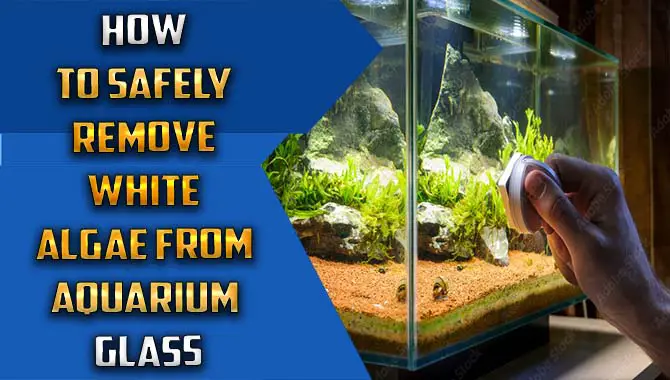Aquariums provide a unique and calming environment that has been shown to have therapeutic benefits. Aquariums are a popular way to bring a piece of the ocean into your home and provide a calming presence in your space.
But how do they work? The science behind aquariums is actually quite simple. Aquariums are essentially closed ecosystems, meaning that the plants and animals within the aquarium rely on each other to create a balanced environment. The plants produce oxygen through photosynthesis and the animals respire, or breathe in, the oxygen. The animals also produce waste, which the plants use as nutrients.
In a well-balanced aquarium, the waste produced by the animals is not enough to pollute the water and the plants produce enough oxygen to keep the animals healthy. In order to maintain this balance, it is important to have the right ratio of plants to animals and to keep up with regular water changes.
Aquariums can be a fun and rewarding way to bring a little bit of nature into your home. By understanding the science behind them, you can ensure that your aquarium is a healthy and thriving environment for all of its inhabitants.
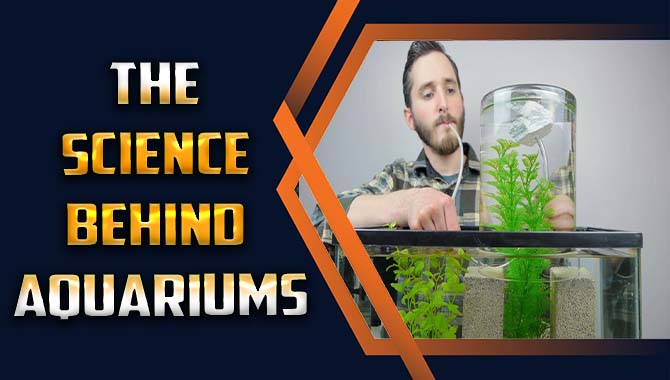
What Are The Different Types Of Aquariums?
There are many different types of aquariums, each with their own unique benefits. Aquariums come in all shapes and sizes, but there are three main types: freshwater, saltwater, and brackish. Freshwater aquariums are the most common type of aquarium. They are relatively easy to set up and maintain, and can be home to a wide variety of fish, plants, and invertebrates.
Saltwater aquariums are more challenging to set up and maintain than freshwater aquariums, but they can be even more rewarding. Saltwater aquariums are home to some of the most beautiful and exotic fish, corals, and other invertebrates.
Brackish aquariums are a mix of freshwater and saltwater, and can be home to a wide variety of fish, invertebrates, and plants. Brackish aquariums are less common than freshwater or saltwater aquariums, but they offer a unique and interesting environment for your fish.
How Do Aquariums Work?
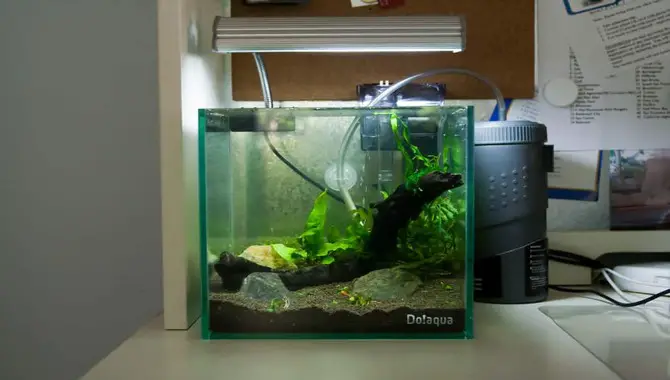
Aquariums work by holding water in a glass or acrylic container. Aquariums are one of the most peaceful and mesmerizing things that you can have in your home. They are also pretty easy to take care of once you know the basics. In this blog post, we will teach you everything that you need to know about how aquariums work.
The first thing that you need to know is that an aquarium is basically a fish tank. It is a container that is used to hold water and fish. The word “aquarium” actually comes from the Latin word “aqua,” which means water.
Aquariums can be made from a variety of materials, but the most common material is glass. Glass is a good material to use because it is clear and it does not absorb any of the water. This means that your fish will have a better view and that the water will stay clean longer.
Another important thing to know about aquariums is that they come in a variety of shapes and sizes. The size of your aquarium will depend on the number of fish that you want to keep and the type of fish that you want to keep. It is important to choose the right size aquarium so that your fish have enough room to swim around and so that the water stays clean.
One of the most important things to know about how aquariums work is that they need to be filled with water. The water in your aquarium needs to be treated with a water conditioner to remove any chlorine or other chemicals that might be harmful to your fish. You can buy water conditioners at your local pet store.
Once you have the water in your aquarium, you will need to add some fish. There are a few things to keep in mind when choosing fish for your aquarium. The first thing to consider is the size of your aquarium. You will want to choose fish that are not too big for your aquarium. The second thing to consider is the type of fish that you want to keep. Some fish are more active than others and will need more space. The third thing to consider is the number of fish that you want to keep. You will want to choose fish that are not too many for your aquarium.
After you have chosen the fish for your aquarium, you will need to add some plants. Plants help to keep the water clean and they also provide oxygen for your fish. There are a variety of plants that you can choose from, so you will want to do some research to find the best plants for your aquarium.
Now that you know the basics of how aquariums work, you can start to enjoy the beauty of your own aquarium.
What Are The Benefits Of Having An Aquarium?
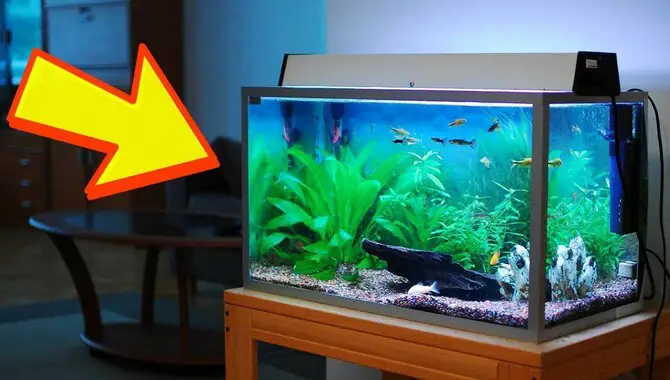
Some benefits of having an aquarium are that it can help reduce stress, can be therapeutic, can improve mental well-being, and can provide a source of entertainment. If you’re looking for a unique way to spruce up your home décor, an aquarium may be the answer. Not only are they aesthetically pleasing, but studies have shown that having an aquarium can actually have some pretty amazing benefits. Here are just a few of the benefits of having an aquarium.
Reduce Stress Whether you’re looking to reduce stress at work or at home, an aquarium can be a great way to do it. Studies have shown that looking at fish can help to lower blood pressure and heart rate. So, if you’re feeling stressed out, take a break and take a few minutes to relax and watch your fish.
Improve Your Mood In addition to reducing stress, having an aquarium can also help to improve your mood. Studies have shown that looking at fish can help to increase levels of serotonin, which is a neurotransmitter that helps to regulate mood. So, if you’re feeling down, take a trip to your local fish store and pick out a new fish for your aquarium.
Boost Your Immune System If you’re looking for a way to boost your immune system, an aquarium can help with that too. Studies have shown that interacting with fish can help to increase levels of immunoglobulin A, which is an antibody that helps to fight off infection. So, if you’re looking for a natural way to boost your immune system, an aquarium may be the answer.
If you’re looking for a unique way to improve your home décor and your health, an aquarium may be the perfect solution. With so many benefits, it’s no wonder that more and more people are adding fish to their home.
How Can I Set Up An Aquarium?
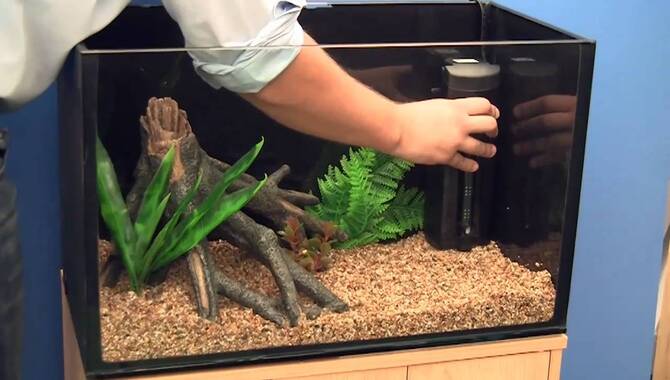
To set up an aquarium, you will need to purchase a tank, filter, gravel, plants, and fish. How to set up an aquarium Aquariums can be a great addition to any home, office, or classroom. They provide a sense of peace, relaxation, and can be a great conversation starter. But before you can enjoy your new aquarium, there are a few things you need to do to set it up correctly. Follow these simple steps and you’ll have your aquarium up and running in no time.
Step 1: Choose the Right Location The first step is to choose the right location for your aquarium. It’s important to find a spot that can support the weight of a full aquarium, has access to an electrical outlet, and is out of direct sunlight. Once you’ve found the perfect location, it’s time to start setting up your aquarium.
Step 2: Assemble Your Aquarium After you’ve chosen the perfect spot for your aquarium, it’s time to start assembling it. If you’re using a kit, follow the instructions that came with it. If you’re starting from scratch, you’ll need to choose the right size aquarium, stand, and canopy. Once you have all the pieces, it’s time to start putting it together.
Step 3: Choose Your Substrate The next step is to choose your substrate. This is the material that you’ll use to line the bottom of your aquarium. Gravel is the most popular choice, but there are other options available, like sand or rocks. Once you’ve chosen your substrate, it’s time to start adding it to your aquarium.
Step 4: Add Your Water After you’ve added your substrate, it’s time to start adding water. If you’re using tap water, you’ll need to treat it with a water conditioner to remove the chlorine and other chemicals. Once you’ve treated your water, you can start adding it to your aquarium.
Step 5: Add Your Decorations The next step is to add your decorations. This is the fun part! You can choose from a wide variety of decorations, like rocks, plants, and even pirate ships. Get creative and make your aquarium your own.
Step 6: Add Your Fish After your aquarium is decorated, it’s time to add your fish. Start with a few fish and add more over time. It’s important to research the fish you’re adding to make sure they’re compatible. That’s it! You’ve now successfully set up your aquarium. Enjoy your new addition and the peace it brings.
Conclusion
Aquariums are a great way to bring the beauty of the ocean into your home. But there is more to them than just pretty fish. The science behind aquariums is quite fascinating. From the filtration system to the lighting, everything in an aquarium is designed to create a healthy environment for the fish.
If you still have any questions about “The Science Behind Aquariums,” hopefully this article has cleared them up. If not, feel free to comment below.
FAQs
What Are The Different Types Of Fish?
According to the Food and Agriculture Organization of the United Nations, there are over 33,000 species of fish. They can be divided into four main groups:
Jawless fish: These fish lack true jaws, and most of them are filter feeders. Examples of jawless fish include lampreys and hagfish.
Cartilaginous fish: These fish have a skeleton made of cartilage instead of bone. Sharks, rays, and skates are all cartilaginous fish.
Bony fish: These are the most common type of fish, and they have a skeleton made of bone. There are over 29,000 species of bony fish, including familiar fish like tuna, salmon, and goldfish.
Lampreys and hagfish: These fish are sometimes classified as their own separate group, as they don’t really fit into any of the other groups. Lampreys are parasitic, and hagfish are scavengers.
What Are The Different Types Of Coral?
Coral is a type of marine invertebrate that forms a hard skeleton. There are two main types of coral: stony coral and soft coral. Stony coral is made up of calcium carbonate and soft coral is made up of a substance called gorgonin.
How Do I Care For My Fish?
To care for your fish, you will need to provide them with a clean and safe environment. This means regularly cleaning their tank and changing their water. You will also need to feed them a healthy diet and monitor their health.
What Are The Different Types Of Aquarium Filters?
The three most common types of aquarium filters are mechanical, chemical, and biological filters. Mechanical filters remove particles from the water using a physical barrier, such as a filter pad. Chemical filters remove dissolved impurities from the water using chemical media, such as activated carbon. Biological filters use beneficial bacteria to convert dissolved waste products into harmless byproducts.

Aquarium passion is all about connecting with the aquatic life and providing education to the public on the importance of these creatures. We showcase a wide variety of marine life through our exhibits as well as working with schools to provide unique learning opportunities for students of all ages.

![How To Lower Ammonia In A Fish Tank [Sign With Solved]](https://meekbond.com/wp-content/uploads/2023/07/How-To-Lower-Ammonia-In-A-Fish-Tank.jpg)
